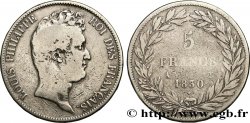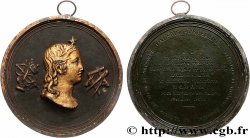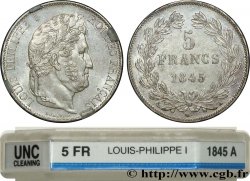E-auction 476-388096 - fme_740535 - LOUIS-PHILIPPE I Médaille, Retour des cendres - funérailles de l’Empereur, refrappe
You must signin and be an approved bidder to bid, LOGIN TO BID. Accounts are subject to approval and the approval process takes place within 48 hours. Do not wait until the day a sale closes to register. Clicking on « bid » constitutes acceptance of the terms of use of cgb.fr private e-auctions.
Bids must be placed in whole Euro amounts only. The sale will start closing at the time stated on the item description; any bids received at the site after the closing time will not be executed. Transmission times may vary and bids could be rejected if you wait until the last second. For further information ckeck the E-auctions F.A.Q.
NO BUYER'S FEE.
NO BUYER'S FEE.
| Estimate : | 75 € |
| Price : | 31 € |
| Maximum bid : | 47 € |
| End of the sale : | 30 May 2022 18:10:30 |
| bidders : | 5 bidders |
Type : Médaille, Retour des cendres - funérailles de l’Empereur, refrappe
Date: n.d.
Mint name / Town : Monnaie de Paris
Metal : bronze
Diameter : 58,5 mm
Orientation dies : 12 h.
Engraver MONTAGNY Jean-Pierre (1789-1862)
Weight : 97,15 g.
Edge : lisse + corne BRONZE
Puncheon : corne BRONZE
Coments on the condition:
Aspect nettoyé, des frottements visibles à l’avers. Faible usure
Obverse
Obverse legend : NAPOLÉON - EMPEREUR.
Obverse description : Tête laurée de Napoléon Ier à gauche. Signé : MONTAGNY F..
Reverse
Reverse legend : FUNÉRAILLES DE L’EMPEREUR / 15 D.BRE 1840..
Reverse description : Vue du cortège funèbre, avec l’Arc de Triomphe en arrière plan. Signé : MONTAGNY F..
Commentary
Une refrappe moderne de la même facture présente un millésime sur la tranche (1967), ce qui n’est pas le cas de celui-ci.
En 1840, le président du Conseil Adolphe Thiers négocie avec le gouvernement anglais le retour des cendres de Napoléon 1er à Paris. Il veut, par cette initiative, redresser le prestige du roi Louis-Philippe 1er. Les Anglais acceptent le transfert, désireux qu'ils sont de se concilier la France avec laquelle ils sont en conflit sur la question d'Orient.
Le 15 décembre 1840, au cours d'une cérémonie populaire et grandiose, le char funèbre entre à Paris et se dirige vers les Invalides où il est accueilli par le roi en personne. Le sarcophage est exposé dans une chapelle du Dôme des Invalides en attendant son transfert dans la crypte monumentale, en 1861.
Sur le trajet, un million de Parisiens devenus bonapartistes pour l'occasion n'hésitent pas à crier « Vive l'Empereur ! ».
Le principal bénéficiaire de l'opération est le courant bonapartiste. Il reprend vie et il ne lui faudra que huit ans pour amener au pouvoir Louis-Napoléon Bonaparte, neveu du regretté empereur.
Napoléon 1er repose depuis lors en l'église Saint-Louis-des-Invalides, selon le voeu qu'il avait exprimé sur son île : « Je désire que mes cendres reposent sur les bords de la Seine, au milieu de ce peuple français que j'ai tant aimé » (Mémorial de Sainte-Hélène).
A modern re-striking of the same type has a year on the edge (1967), which is not the case with this one..
In 1840, the President of the Council, Adolphe Thiers, negotiated with the English government the return of Napoleon I's ashes to Paris.. With this initiative, he wants to restore the prestige of King Louis-Philippe I.. The English accepted the transfer, eager as they were to reconcile France with which they were in conflict over the Eastern question..
On December 15, 1840, during a popular and grandiose ceremony, the funeral carriage entered Paris and headed towards the Invalides where it was welcomed by the king himself.. The sarcophagus is displayed in a chapel of the Dôme des Invalides while awaiting its transfer to the monumental crypt in 1861..
Along the way, a million Parisians who had become Bonapartists for the occasion did not hesitate to shout \\\"Long live the Emperor!\\\".
The main beneficiary of the operation is the Bonapartist movement. He came back to life and it took him only eight years to bring Louis-Napoléon Bonaparte, nephew of the late emperor, to power..
Napoleon I has since rested in the church of Saint-Louis-des-Invalides, according to the wish he expressed on his island: \\\"I wish my ashes to rest on the banks of the Seine, among the French people whom I loved so much\\\" (Saint Helena Memorial)
En 1840, le président du Conseil Adolphe Thiers négocie avec le gouvernement anglais le retour des cendres de Napoléon 1er à Paris. Il veut, par cette initiative, redresser le prestige du roi Louis-Philippe 1er. Les Anglais acceptent le transfert, désireux qu'ils sont de se concilier la France avec laquelle ils sont en conflit sur la question d'Orient.
Le 15 décembre 1840, au cours d'une cérémonie populaire et grandiose, le char funèbre entre à Paris et se dirige vers les Invalides où il est accueilli par le roi en personne. Le sarcophage est exposé dans une chapelle du Dôme des Invalides en attendant son transfert dans la crypte monumentale, en 1861.
Sur le trajet, un million de Parisiens devenus bonapartistes pour l'occasion n'hésitent pas à crier « Vive l'Empereur ! ».
Le principal bénéficiaire de l'opération est le courant bonapartiste. Il reprend vie et il ne lui faudra que huit ans pour amener au pouvoir Louis-Napoléon Bonaparte, neveu du regretté empereur.
Napoléon 1er repose depuis lors en l'église Saint-Louis-des-Invalides, selon le voeu qu'il avait exprimé sur son île : « Je désire que mes cendres reposent sur les bords de la Seine, au milieu de ce peuple français que j'ai tant aimé » (Mémorial de Sainte-Hélène).
A modern re-striking of the same type has a year on the edge (1967), which is not the case with this one..
In 1840, the President of the Council, Adolphe Thiers, negotiated with the English government the return of Napoleon I's ashes to Paris.. With this initiative, he wants to restore the prestige of King Louis-Philippe I.. The English accepted the transfer, eager as they were to reconcile France with which they were in conflict over the Eastern question..
On December 15, 1840, during a popular and grandiose ceremony, the funeral carriage entered Paris and headed towards the Invalides where it was welcomed by the king himself.. The sarcophagus is displayed in a chapel of the Dôme des Invalides while awaiting its transfer to the monumental crypt in 1861..
Along the way, a million Parisians who had become Bonapartists for the occasion did not hesitate to shout \\\"Long live the Emperor!\\\".
The main beneficiary of the operation is the Bonapartist movement. He came back to life and it took him only eight years to bring Louis-Napoléon Bonaparte, nephew of the late emperor, to power..
Napoleon I has since rested in the church of Saint-Louis-des-Invalides, according to the wish he expressed on his island: \\\"I wish my ashes to rest on the banks of the Seine, among the French people whom I loved so much\\\" (Saint Helena Memorial)








 Report a mistake
Report a mistake Print the page
Print the page Share my selection
Share my selection Ask a question
Ask a question Consign / sell
Consign / sell
 Full data
Full data











